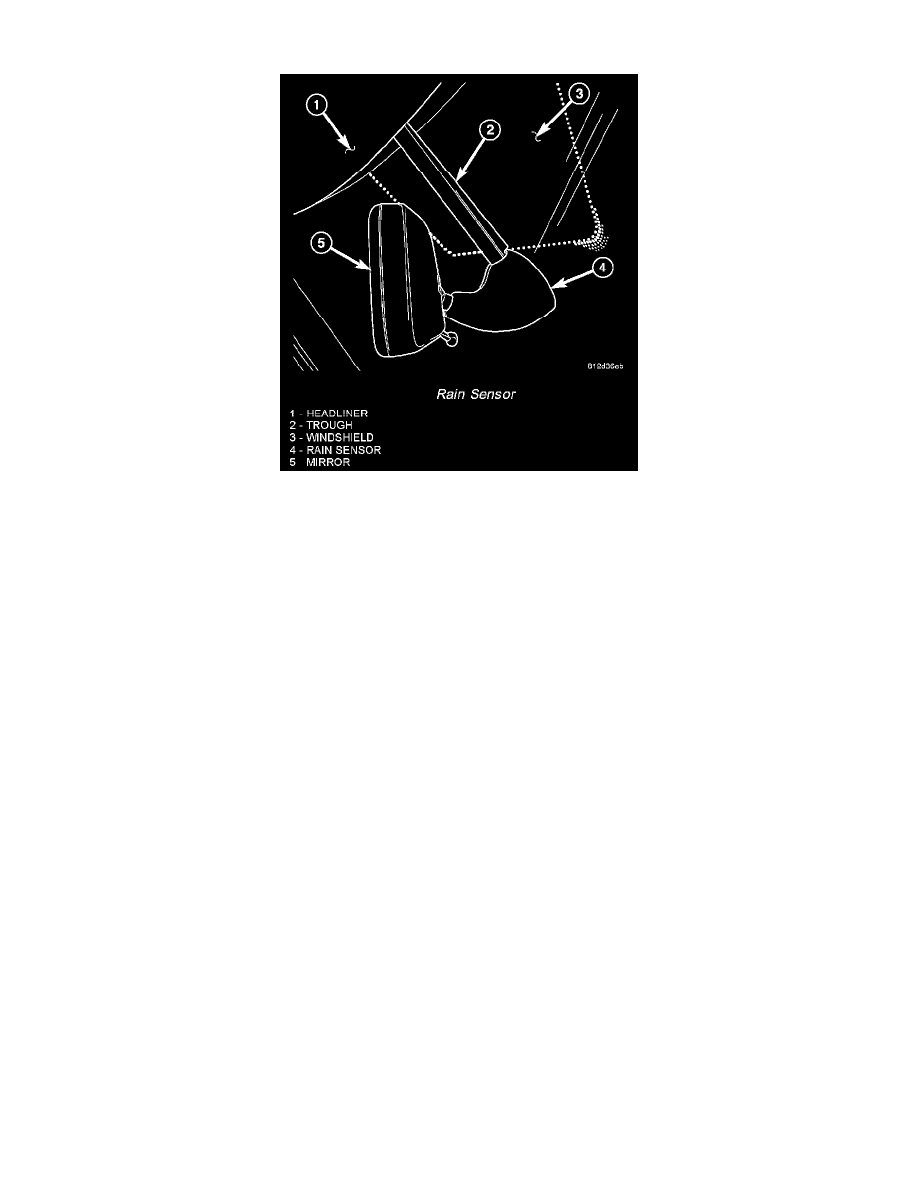Sprinter 3500 L5-2.7L DSL Turbo (2004)

Ambient Light Sensor: Description and Operation
Rain Sensor
The rain sensor provides the primary input for the optional automatic wiper system. The rain sensor is located on the inside of the windshield, where it is
concealed within the molded plastic trim cover that snaps over the base of the rear view mirror arm. The sensor fits within the center of a ring-like
molded plastic bracket that is glued to the inside of the windshield glass and that also serves as the support for the rear view mirror.
The rain sensor is contained within a circular molded black plastic housing with a short pigtail wire and a connector insulator containing three terminal
cavities that exits one side of the housing. This pigtail connects the rain sensor to the vehicle electrical system through a dedicated take out and connector
of the overhead wire harness that extends from above the headliner. A molded plastic trough routes and conceals the pigtail wires on the inside of the
windshield between the rear view mirror base and the headliner.
The windshield side of the rain sensor housing is open, but covered with a clear gelatin-like material that protects the internal electronic sensor circuitry
and serves as the lens for the Infrared (IR) diodes and photocells within the sensor housing. This gel coating must never be touched or the rain sensor
function may be impaired and the unit rendered unusable. The rain sensor cannot be adjusted or repaired and, if damaged or faulty, the entire sensor must
be replaced. The sensor bracket and a rear view mirror adhesive kit are available for separate service replacement.
The rain sensor operates on battery current and a clean ground received from the rain sensor control module. The rain sensor contains Infrared (IR)
diodes that direct IR light beams at the windshield at an angle. When the windshield glass is dry, most of this IR light is reflected back to the sensor,
which uses photocell receivers to measure the intensity of the light. When moisture accumulates on the windshield glass, much of the IR light is refracted
away from the photocell receivers. This causes changes in the signal output of the rain sensor. The rain sensor control module monitors the signal output
from the sensor and then controls the wiper motor speed and wipe intervals accordingly.
It is important to note that the default condition for the wiper system is automatic wipers Off; therefore, if no message is received from the rain sensor by
the rain sensor control module, the automatic wipers will be disabled. If automatic wipers are disabled, normal low and high speed continuous wiper
operation are unaffected. Also, due to the low voltage nature of the rain sensor signal and the impact that minor fluctuations in this signal strength can
have on wiper operation, grounded shielding circuits are provided at the roof and control module connectors to control electrical induction into the
sensor signal circuit.
The hard wired rain sensor circuits may be diagnosed using conventional diagnostic tools and methods. However, conventional diagnostic methods may
not prove conclusive in the diagnosis of the internal circuitry or the optics of the rain sensor. Refer to the appropriate wiring information.
RAIN SENSOR CONTROL MODULE
